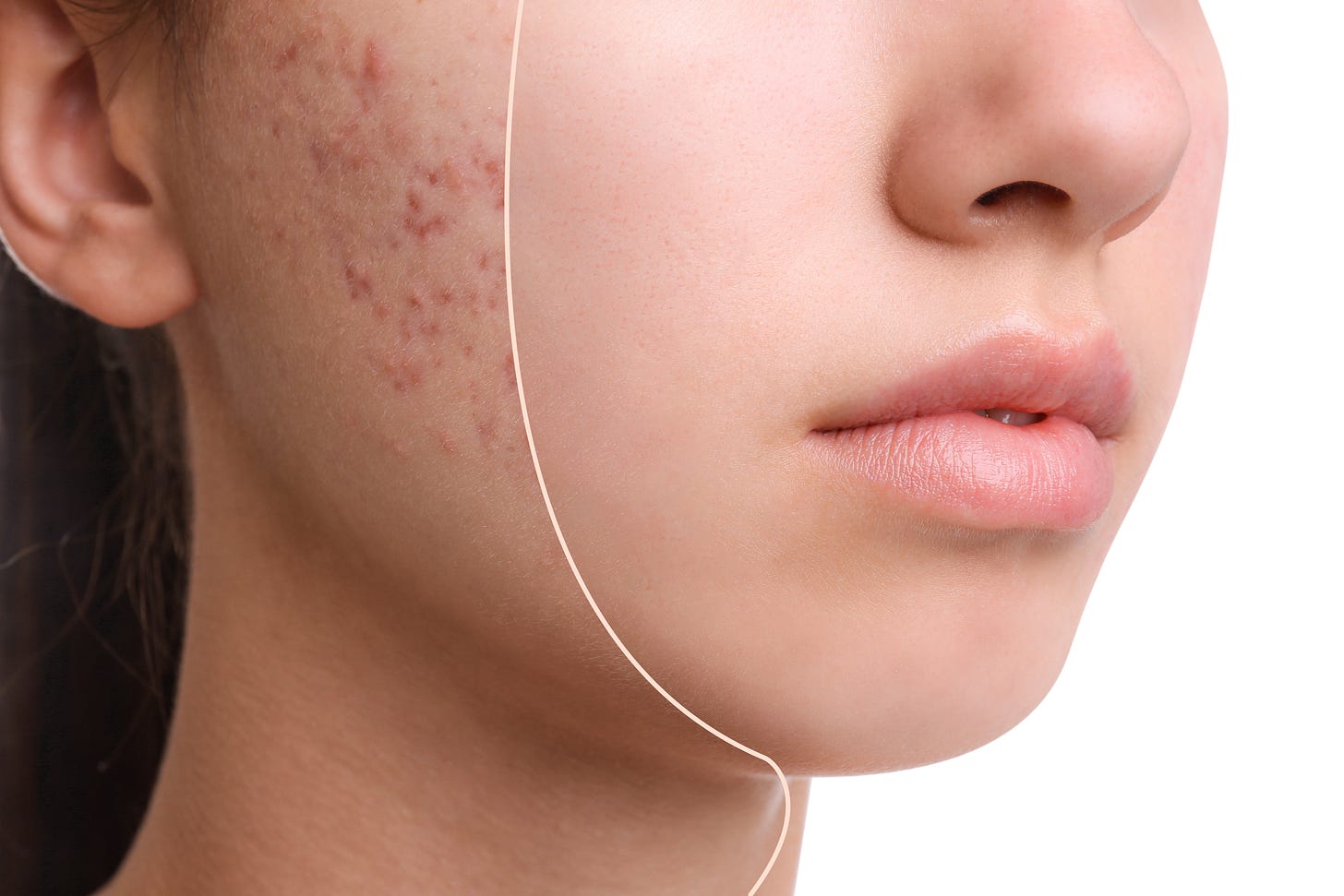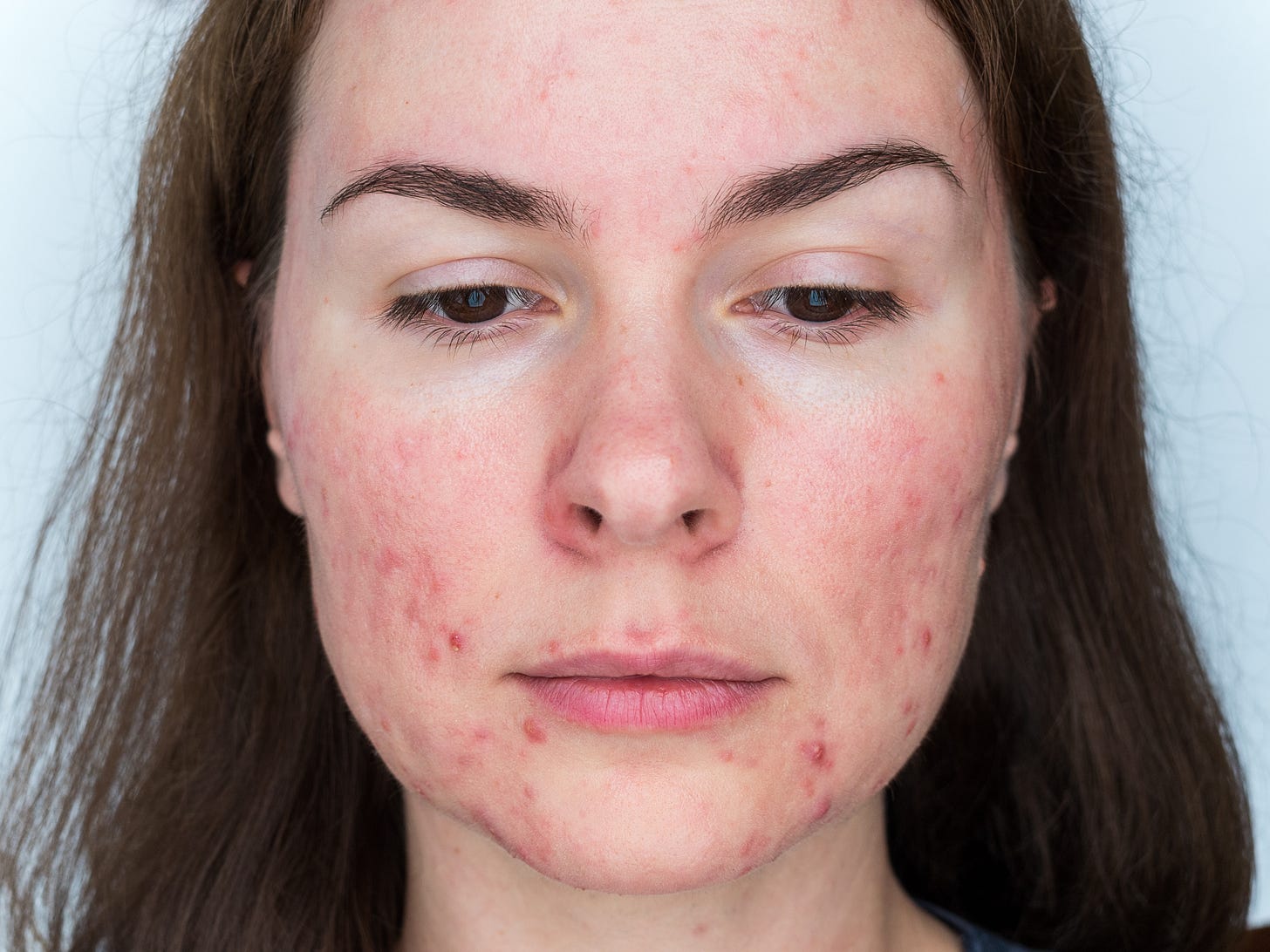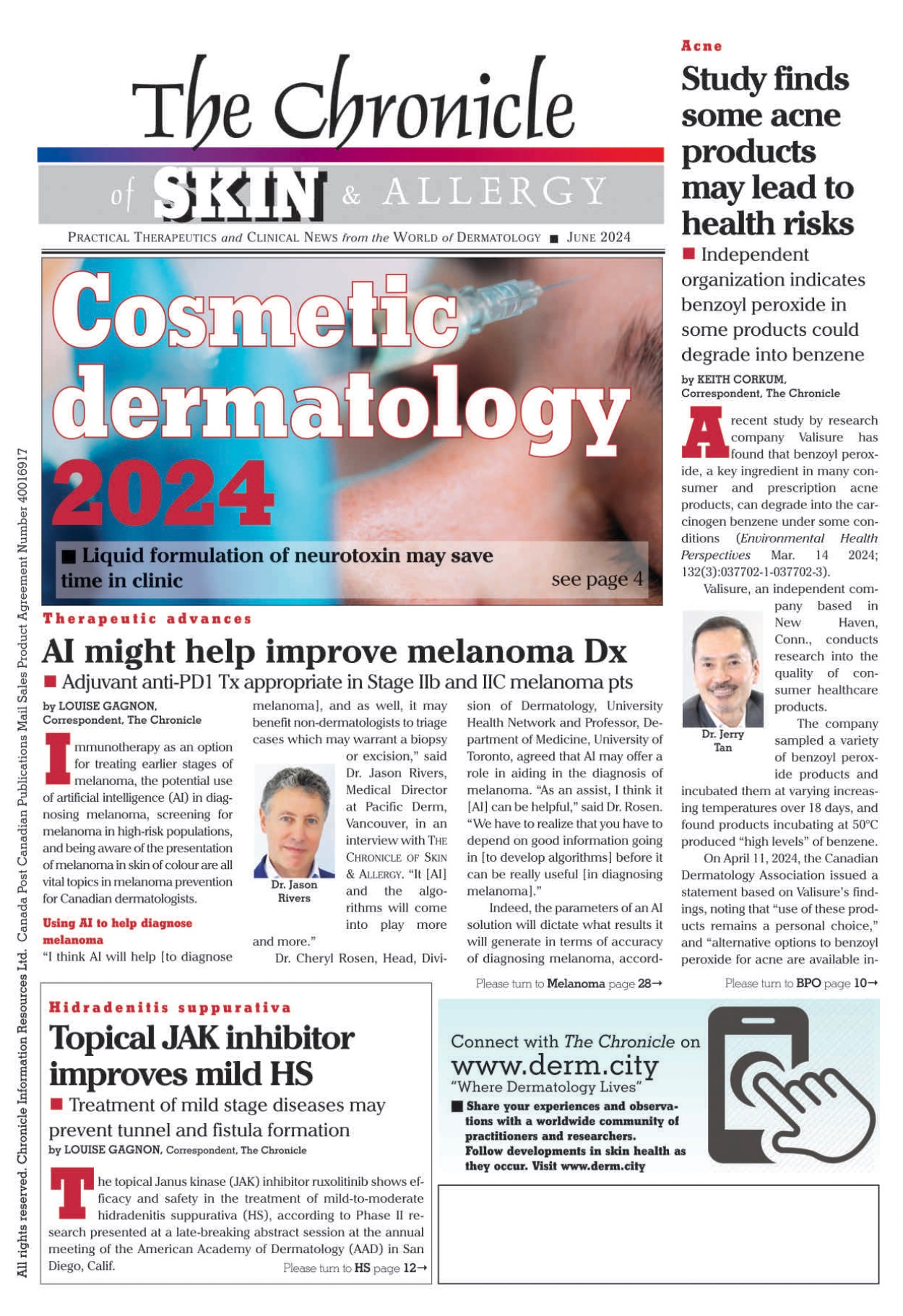Topical clascoterone combined with other topical agents a promising Tx approach for acne
Today's report also covers links between acne and BMI, gels for acne scars, needle radiofrequency therapy, and more (1,500 words, 6 minutes, 50 seconds)
The Focus on Acne e-newsletter is supported by an unrestricted grant from Sun Pharma Canada
Good morning, and welcome to the 16th issue of Focus on Acne, presented by Skin Spectrum Weekly. This series provides up-to-date information on developing therapies and trends in acne treatment. We appreciate your feedback and suggestions and invite you to be in touch. Please write to us at health@chronicle.org
Topical clascoterone combined with other topical agents a promising Tx approach for acne
A small, open-label pilot study has demonstrated promising results for the first studied combination of topical agents to target all four aspects of acne pathophysiology.
This single-center prospective study, published in the Journal of Clinical and Aesthetic Dermatology (Jan. 2025; 18(1):20-23), assessed the safety, tolerability, and efficacy of clindamycin phosphate 1.2%/adapalene 0.15%/benzoyl peroxide (BPO) 3.1% gel used concurrently with clascoterone 1% cream for the treatment of acne.
Investigators enrolled six subjects aged 21 to 27 years and evaluated them at Week 0, Week 2, Week 4, and Week 8 with respect to erythema, dryness, and inflammatory lesion count (ILC).
They found ILC decreased from 23.50+/-8.17 at baseline to 9.50+/-7.53 at Week 8. The average subject-reported adherence rate was 93.81%, and the most commonly reported side effects were burning/stinging and erythema; all were rated as mild.
The authors conclude that further large-scale studies are needed to elucidate the additive efficacy and side effect profile when these two topical medications are used concomitantly.
New analysis suggests no causal link between BMI, acne
Using findings from a Mendelian randomization approach to evaluate the causal effects of exposure factors on acne outcome variables, researchers suggest no causal relationship between Body Mass Index (BMI) and acne.
This is the conclusion of a paper published in the Journal of Cosmetic Dermatology (March 2025; 24(3):e70092).
In a two-sample Mendelian randomization study, investigators applied the inverse-variance weighted (IVW) method to evaluate the causal effect as the primary analysis between BMI and acne. They included 58 single‐nucleotide polymorphisms, accounting for 2.5% (R2) of the BMI variation as instrumental variables (IVs) for BMI-acne causal estimations.
The F-statistic obtained from the first stage of the MR regression model was 61. Notably, the researchers note the results from all three methods consistently indicated that an increase in BMI did not elevate the risk of acne, with each result reaching statistical significance. Cochran's Q test revealed no evidence of heterogeneity among the IV estimates for individual variants. The I2 values investigators found suggested low heterogeneity, reinforcing the MR estimates' reliability. The "leave-one-out" analysis also confirmed that no single SNP disproportionately affected the IVW point estimate.

New gel product effectively improves acne scars, hyperpigmentation
A new topical acne scar gel (TASG) is a safe and effective therapeutic option for improving the appearance of acne scars and related hyperpigmentation.
These findings were published in the Journal of Cosmetic Dermatology (March 2025; 24(3):e70081).
Researchers included 27 healthy subjects (age range 18 to 45 years) presenting with mild to moderate acne scarring and hyperpigmentation in this single-center, open-label clinical trial. Participants applied the study gel twice daily and were evaluated at four visits over 12 weeks.
The investigators noted no significant treatment-related adverse events. They found 72.5% of subjects had smoother skin and reduced hyperpigmentation (as per observer grading of photographs) and redness at the final week 12 follow-up visit. Subjective questionnaire results also showed high patient satisfaction, with overall positive impressions of the product and its regular use.
Needle RF + exosome therapy effectively improves acne, skin quality
Needle radiofrequency (RF) treatment, combined with topical exosome therapy, appears to effectively reduce acne lesions and improve skin quality with good safety and high patient satisfaction.
These findings come from a case series published in Life (Basel) (Jan. 21, 2025; 15(2):141)
This study involved 22 patients (12 females and 10 males, ages 18 to 35 years) with moderate to severe acne who underwent combined needle RF and topical exosome (Xomage, Zishel Bio Inc., Seoul, Republic of Korea) treatments. Each patient completed between six and 10 sessions, conducted weekly over three-week intervals. Researchers assessed acne severity using the Investigator's Global Assessment (IGA) scale, while they measured patient satisfaction on a five-point Likert scale. They took clinical photographs at baseline and after the final treatment session.
All patients showed improvement in acne severity with a mean decrease in IGA score of 2.5 points from baseline to the final assessment. Patient satisfaction was high, with the majority expressing satisfaction in skin texture and acne reduction.

Subscribe to The Chronicle of Skin & Allergy
Established in 1995, The Chronicle of Skin & Allergy is a scientific newspaper providing news and information on practical therapeutics and clinical progress in dermatologic medicine.
To apply for a complimentary* subscription, please email health@chronicle.org with your contact information or click the link below.
If you find the contents of this newsletter interesting, please check out the Yadav on Acne podcast. It’s available at Apple iTunes, Stitcher, Spotify, or wherever you get your podcasts.








